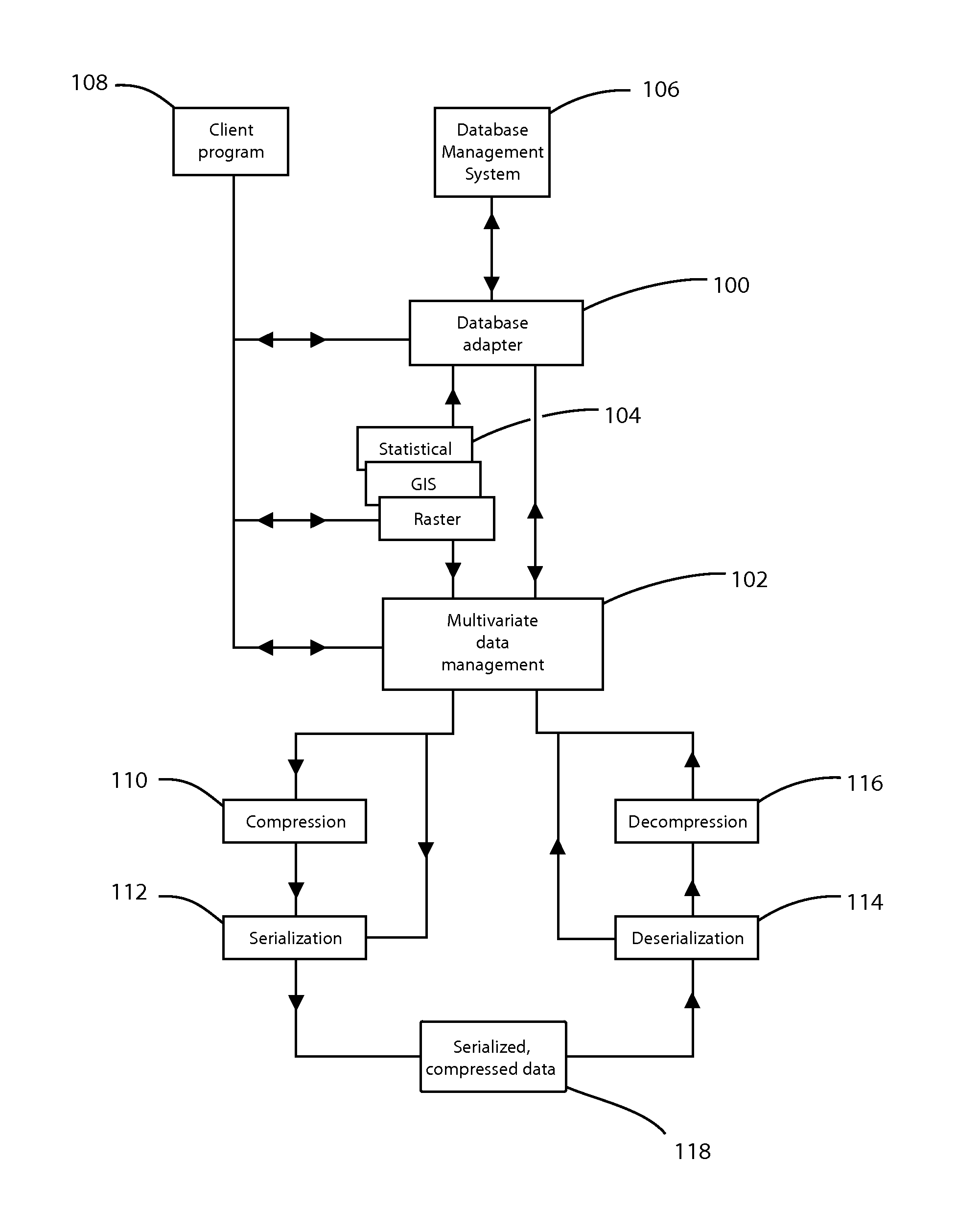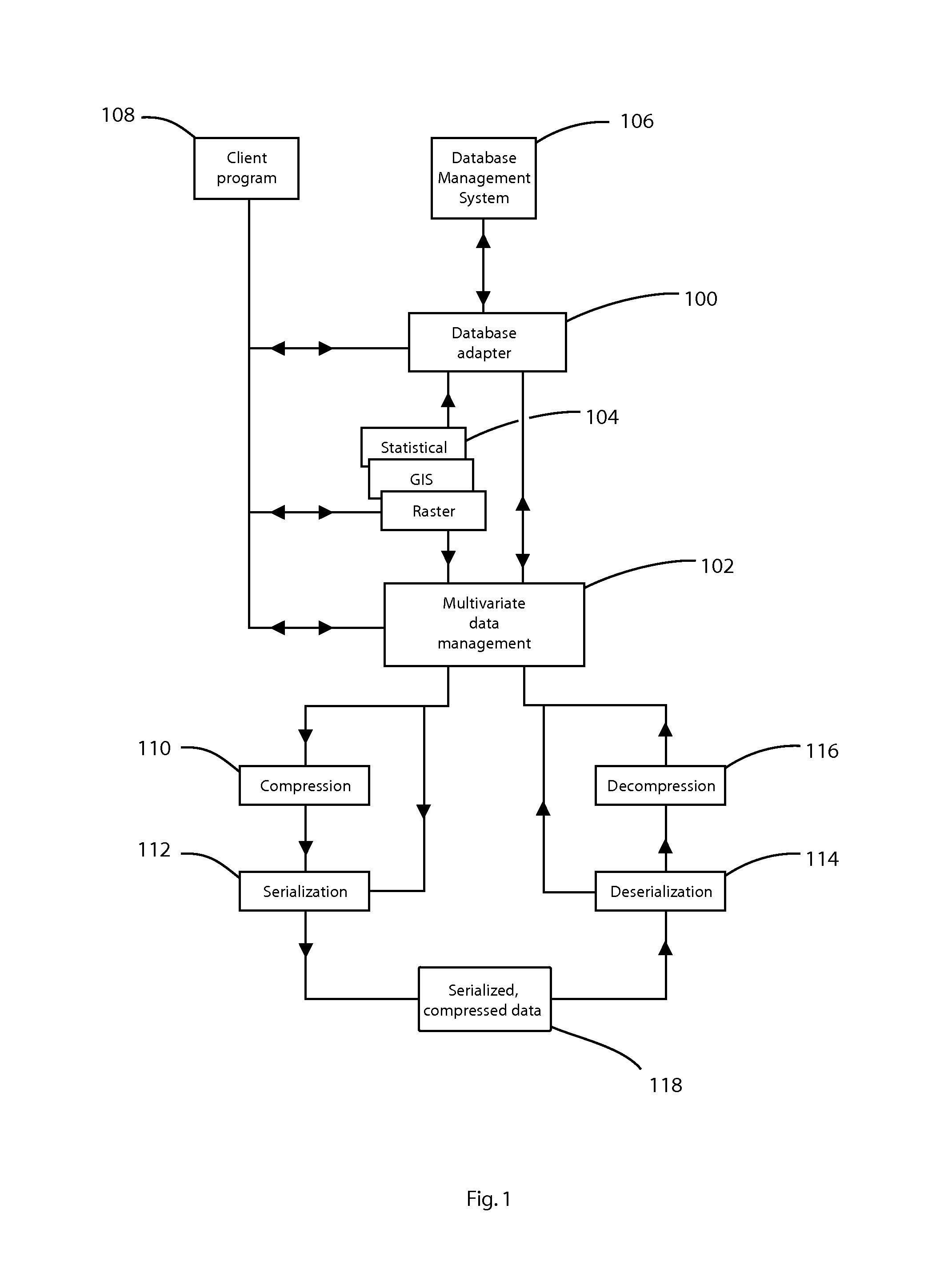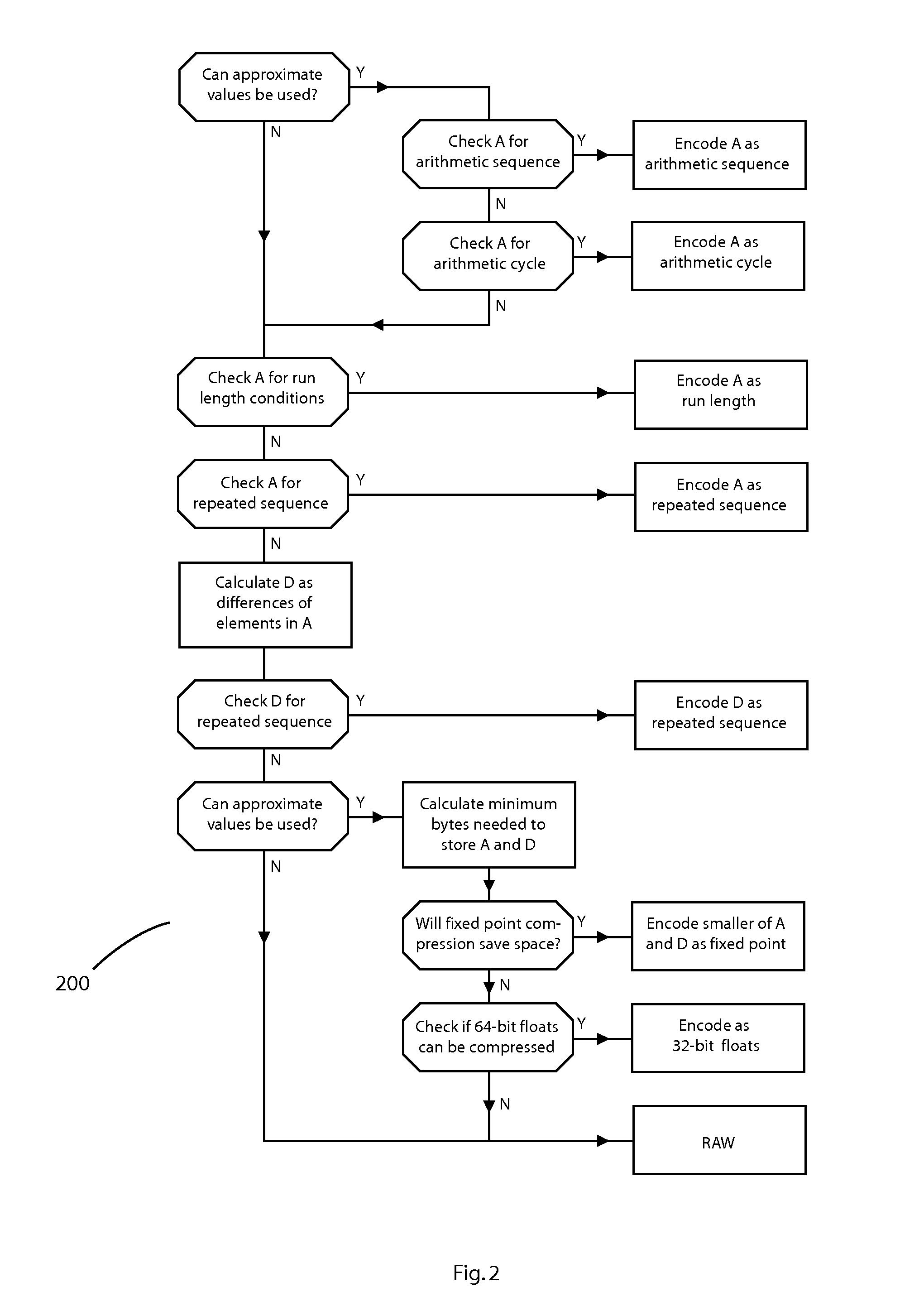Database adapter for relational datasets
a database adapter and relational dataset technology, applied in special data processing applications, instruments, electric digital data processing, etc., can solve the problems of not working well when applied to large volumes of numeric data, patents do little to take advantage of opportunities identified, and schemes are quite rapid, so as to simplify updates and insertions, and add to the overhead of storing data. , to achieve the effect of finding data more efficiently, and simplifying the overhead of updating and insertions
- Summary
- Abstract
- Description
- Claims
- Application Information
AI Technical Summary
Benefits of technology
Problems solved by technology
Method used
Image
Examples
Embodiment Construction
[0089]FIG. 1 shows the preferred embodiment of the invention. The database adapter 100 is a general interface to the functionality provided by the multivariate data management module 102. The database adapter 100 is customized to be portable to a variety of different DBMSs running on a variety of different hardware platforms. The multivariate data management module 102 works in conjunction with a compression module 110 and a serialization module 112 to store serialized, compressed data 118 in a database. Retrieval of data from the database uses a deserialization module 114 and a decompression module 116 to convert stored data 118 to the data's original type.
[0090]The multivariate data management module 102 also provides the following functionality:[0091]Creation of a new, empty multivariate dataset.[0092]Addition of a column to a multivariate dataset.[0093]Setting the numeric precision of a column.[0094]Specification of a preferred compression scheme for a column.[0095]By default, t...
PUM
 Login to View More
Login to View More Abstract
Description
Claims
Application Information
 Login to View More
Login to View More - R&D
- Intellectual Property
- Life Sciences
- Materials
- Tech Scout
- Unparalleled Data Quality
- Higher Quality Content
- 60% Fewer Hallucinations
Browse by: Latest US Patents, China's latest patents, Technical Efficacy Thesaurus, Application Domain, Technology Topic, Popular Technical Reports.
© 2025 PatSnap. All rights reserved.Legal|Privacy policy|Modern Slavery Act Transparency Statement|Sitemap|About US| Contact US: help@patsnap.com



